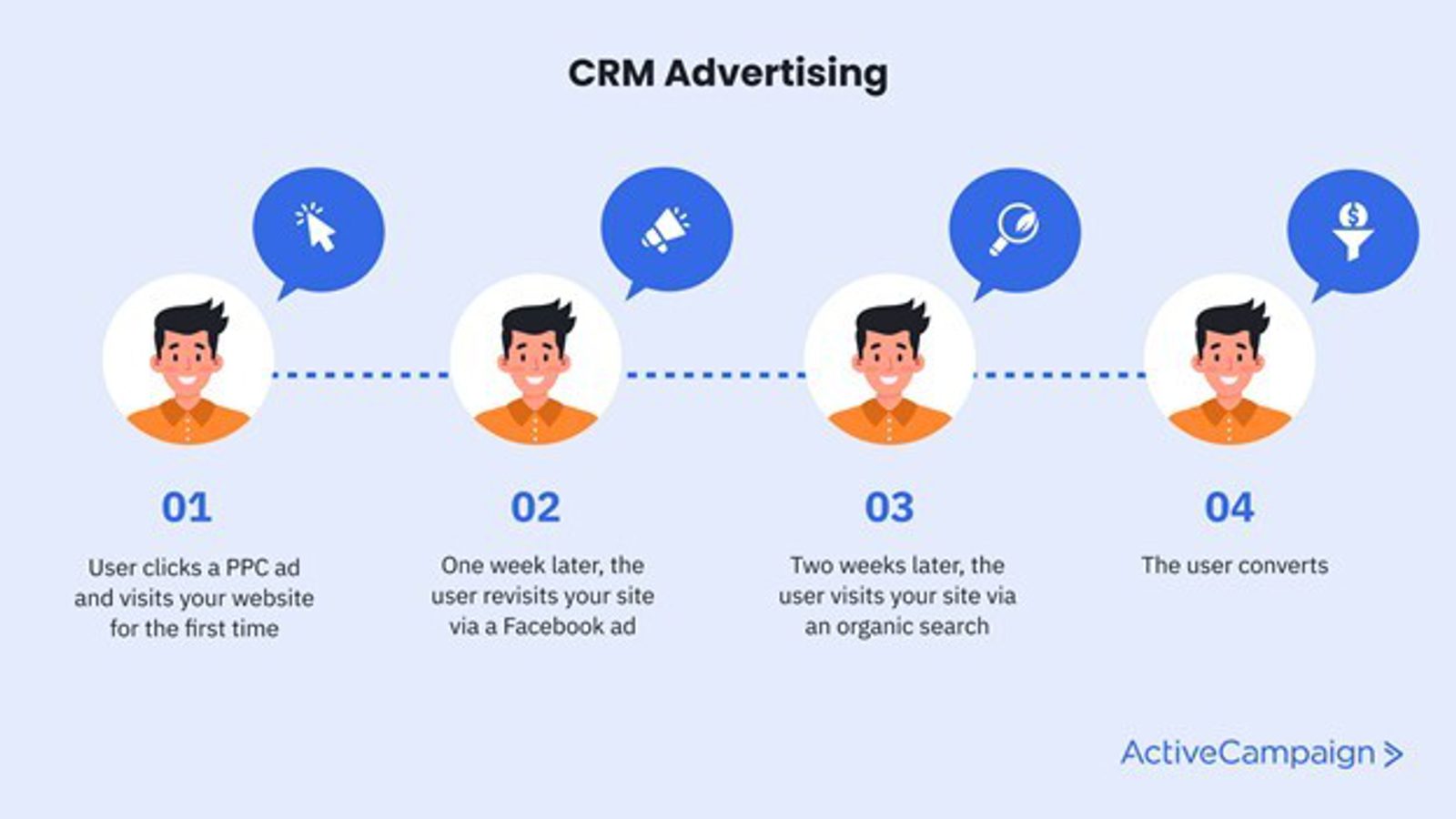65% of businesses use customer relationship management (CRM) software.
Why?
Because CRM tools help businesses plan, manage, and track their customer and sales data.
But what does this have to do with advertising?
It’s a good question. The short answer is that it provides businesses with the insights they need to create tailored and personalized ads for customers.
For the long answer, you’ll have to keep reading.
In this article, we’ll outline how you can use CRM advertising to increase sales, improve the customer experience, and grow your business.
What is CRM advertising?
Before we look at CRM advertising, let’s clarify what CRM is.
CRM stands for customer relationship management. It involves managing customer interactions throughout the sales process. The aim is to build customer relationships and increase your chance of getting sales.
CRM advertising connects marketing software with social media and advertising networks.
At its core, CRM advertising is all about the customer experience. It allows businesses to leverage customer data to create personalized and targeted experiences across different platforms, such as on social media and in advertising networks.
Here’s an example of CRM advertising in action.
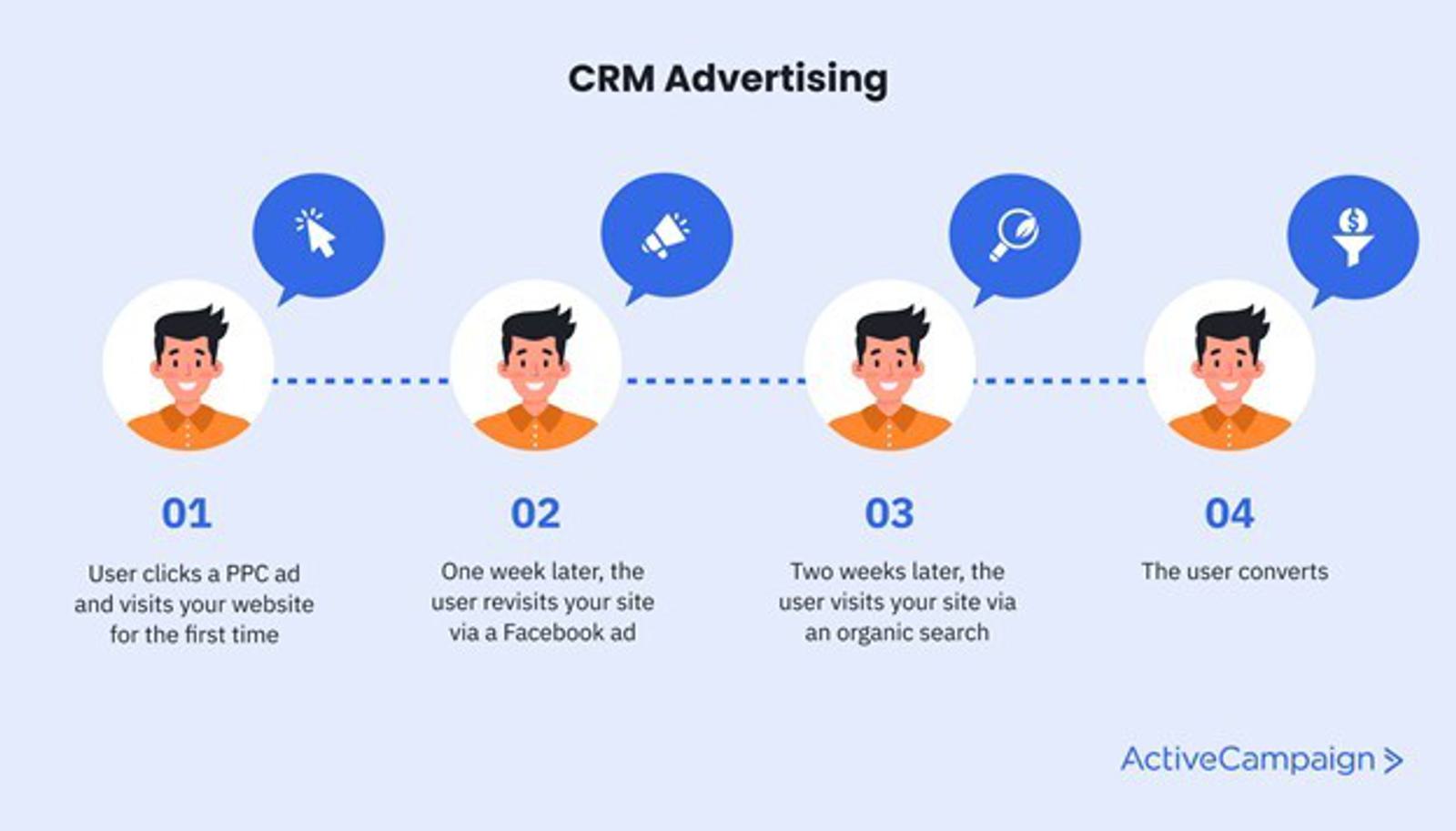
The consumer engages with a business at multiple touchpoints. In doing so, the business creates a unique customer journey across various digital channels.
The role of CRM in marketing
When it comes to digital marketing, you need to know who your customers are and what they want. Using this information, you can tailor your marketing strategy to match their needs and habits.
This is where a CRM platform is helpful.
CRM software stores all your customer and sales data. With all this information in one place, marketers can easily analyze customer behavior and create targeted marketing campaigns.
Let’s take a look at the customer lifecycle as an example.
With a CRM system, marketers can visualize all the steps a customer goes through throughout the buying process. From consideration and research to making a purchase and maintaining customer loyalty, the entire process is documented in the platform.
This information helps the marketing team (and the sales team) better understand the customer lifecycle. This means they can send targeted messages and communications as part of their marketing activity, building relationships with existing and potential customers along the way.
And depending on the CRM platform you use, you can also automate parts of the customer relationship process. With a platform like ActiveCampaign, for example, you can automate lead prioritization and contact management.
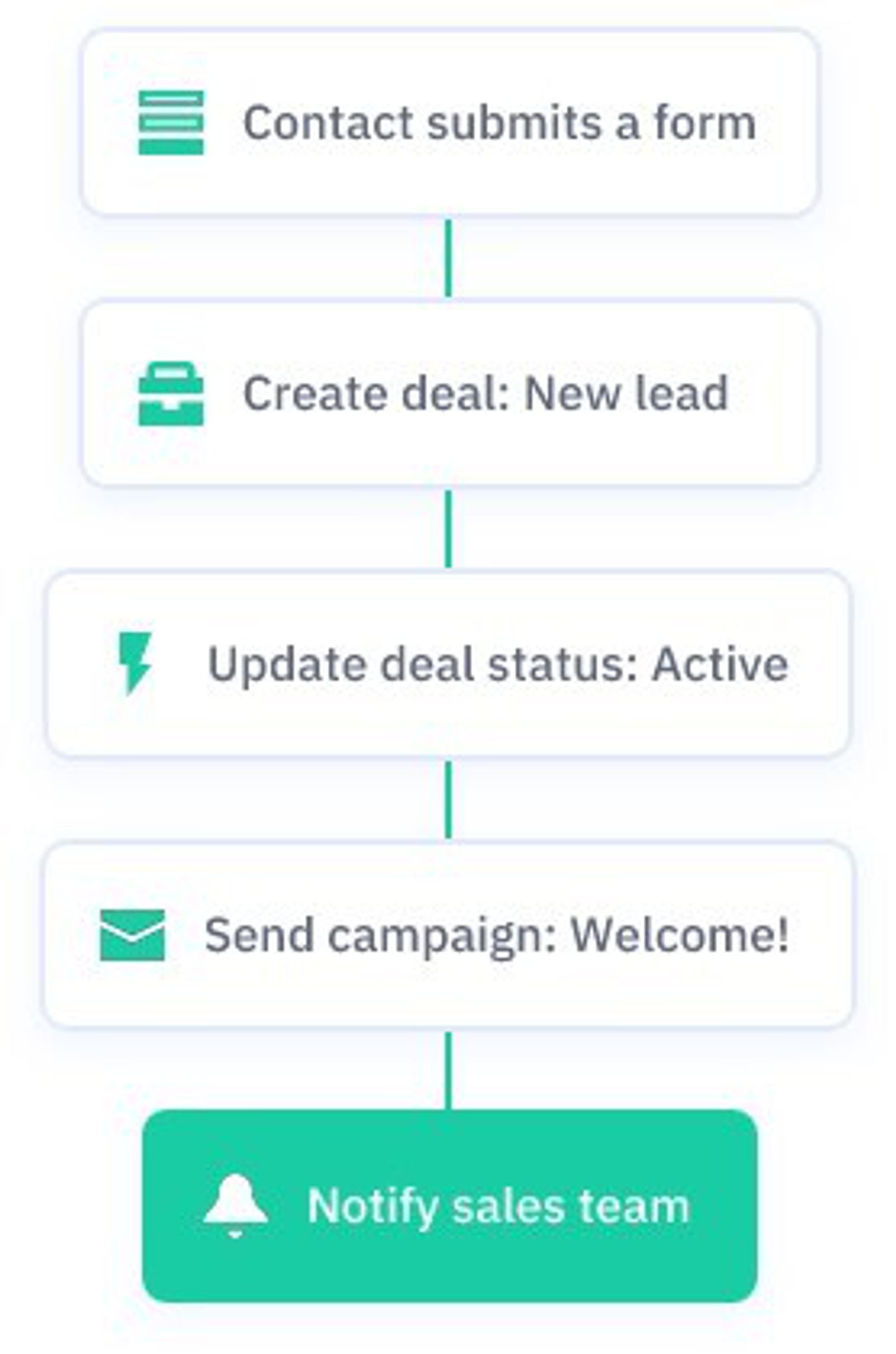
As a result, your customers have a better experience, and you have a higher chance of increasing sales. It’s a win-win.
Why is CRM advertising important?
CRM advertising allows businesses to leverage customer and sales data. But why is this important?
Let’s take a look.
Personalize the customer experience
CRM advertising gives you access to a lot of customer information. You can find out what demographic your audience is, how they’ve interacted with your business, and if/when they made a purchase.
You’ll also have access to personal details, such as contact information.
All of these details give you a solid foundation for personalization. And studies show that when consumers receive a personalized experience, they’re more likely to buy.
Conversion rates increase from 1.7% to 3.4% when consumers view personalized content.
Not to mention, 84% of customers say the experience they have with a company is just as important as the products and services it sells.
The good news is that CRM advertising allows you to provide a tailor-made online experience for your customers.
Whether attracting new customers at the start of the customer lifecycle or offering incentives to increase customer retention, you can use the data from your CRM to target consumers effectively.
Increase customer engagement
A well-created ad campaign can increase customer engagement.
How?
By showing consumers what they want to see when they want to see it.
46% of consumers say the main benefit of targeted ads is that it reduces irrelevant advertising.
In other words, they only want to see relevant ads.
That’s where CRM advertising comes in.
Using the data in your CRM solution, you can make sure that your ads are reaching customers with the right messaging at the right time. As a result, they’re more likely to engage positively with your ads.
And since most ads direct consumers to their company website, chances are your site engagement stats will start to rise, too.
Generate high-quality leads
High-quality lead generation is a tough one for marketers. Almost 40% of marketers say it’s one of their biggest challenges.
But CRM advertising helps you improve your customer acquisition efforts and target qualified leads.
How?
By giving you the real-time data that you need to identify high-quality leads in the first place.
One example is using your CRM data to create buyer personas. In doing so, you’ll be able to figure out who engages with your business and how to reach them with your paid ads.
It also helps you segment your audience, meaning that you can target different types of customers with different ads. For example, you might review your existing customer base and create a buyer persona based on age, demographics, and buying behavior.
With this information, you can make sure that your ads are targeting high-quality leads and avoid generic consumers that don’t fit your demographic.
How to use CRM advertising to grow your business (+ examples)
We’ve covered the benefits, now let’s take a look at how you can use CRM advertising to grow your business.
Step 1. Use the right digital channels
74% of businesses say that sales tools (such as CRMs and digital ads) are “extremely critical or critical in closing deals.”
But with so many tools and platforms out there, how do you know which channels to use?
If you’re not using the right channels to advertise, it’s unlikely you’ll reach the right audience. As a result, you’ll be advertising to people who don’t need or want your product.
It’s up to you to figure out which digital channels will suit your business needs and reach your customers. To give you an idea of what’s out there, we’ve outlined some of the main digital advertising channels:
Social media
In 2021, social media ad spending reached almost $154 billion. By 2023, it’s predicted to reach $233 billion.
From Facebook to Instagram and all the other platforms in between, businesses are using social channels to target their consumers.
With so many options to choose from, finding the right social platforms to advertise on can be tricky.
To get the ball rolling, familiarize yourself with which platforms your target audience uses the most and why. This will help you pinpoint the right channels and the type of messaging to use in your ads.
Take a look at shoe-retailer TOMS as an example of finding the right platform.
The company wanted to raise brand awareness and change brand perception. They aimed to differentiate themselves from the competition, showing consumers that they’re a giving-based brand.
But to do this effectively, they had to choose the right social platform.
They turned to Facebook ads.

Given that TOMS has a younger target audience of males and females, Facebook is a great platform to use to reach their audience.
Search engine marketing
Pay-per-click ads (PPC) appear on search engines such as Google and Bing. They’ll show up on the results page when consumers search for a specific phrase or keyword.
How much you’re willing to bid on those keywords will determine where your ad appears in the rankings. But the good news is you only have to pay for the ad when a consumer clicks it (hence the name pay-per-click).
To make the most out of search engine marketing, you need to do keyword research to identify the phrases you want to target. You only want to advertise when people search for phrases that are relevant to your business.
For example, when you search ‘marketing automation’ on Google, an ActiveCampaign ad appears.
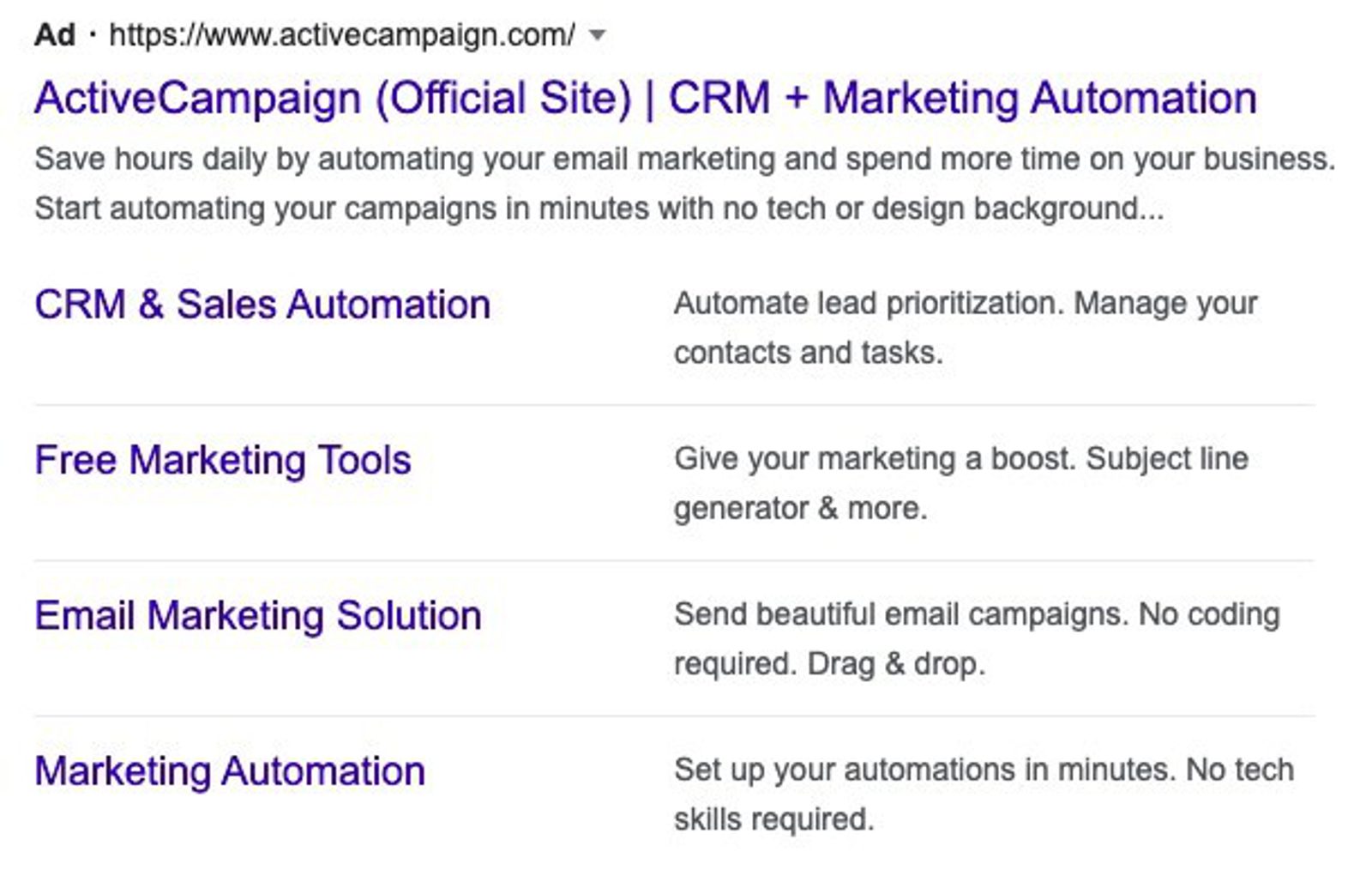
Email marketing
Although email marketing isn’t technically “advertising,” it’s a great tool to help you maximize the return on your ad spend.
Why?
Because it helps you nurture the audience you build across different channels. And we know that consumers are more likely to buy if they’re part of an omnichannel experience.
In fact, they’re 287% more likely to make a purchase when targeted using three or more channels.
So, if you’re advertising your product online and you also create an email campaign promoting that product, you’re more likely to get a sale.
Simply put, the more platforms you can use to get your message across, the better.
And if you use omnichannel marketing software as part of your workflow, you can align all your marketing activity — including CRM-targeted ads and email marketing campaigns.
This means you’ll be able to create a streamlined experience for your customers and save yourself time, too. Everything will be in one location, so you won’t have to flick back and forth between different marketing tools.
Step 2. Segment your audience
Segmentation allows you to divide your consumers into subsets based on different factors. These could be demographics, purchase history, or common preferences.
Dividing your consumers into subsets means that you can offer tailored advertising for different groups.
For example, you might segment your email subscribers into different groups based on their purchase history. With this segmentation, you can send certain emails to these groups to increase engagement and conversions.
To see an example of customer segmentation in action, take a look at Wild Audience.
Using automation, the company sorts its leads into different segments based on their answers to certain questions. The segmented leads are then provided with information that’s relevant to the answers they gave.
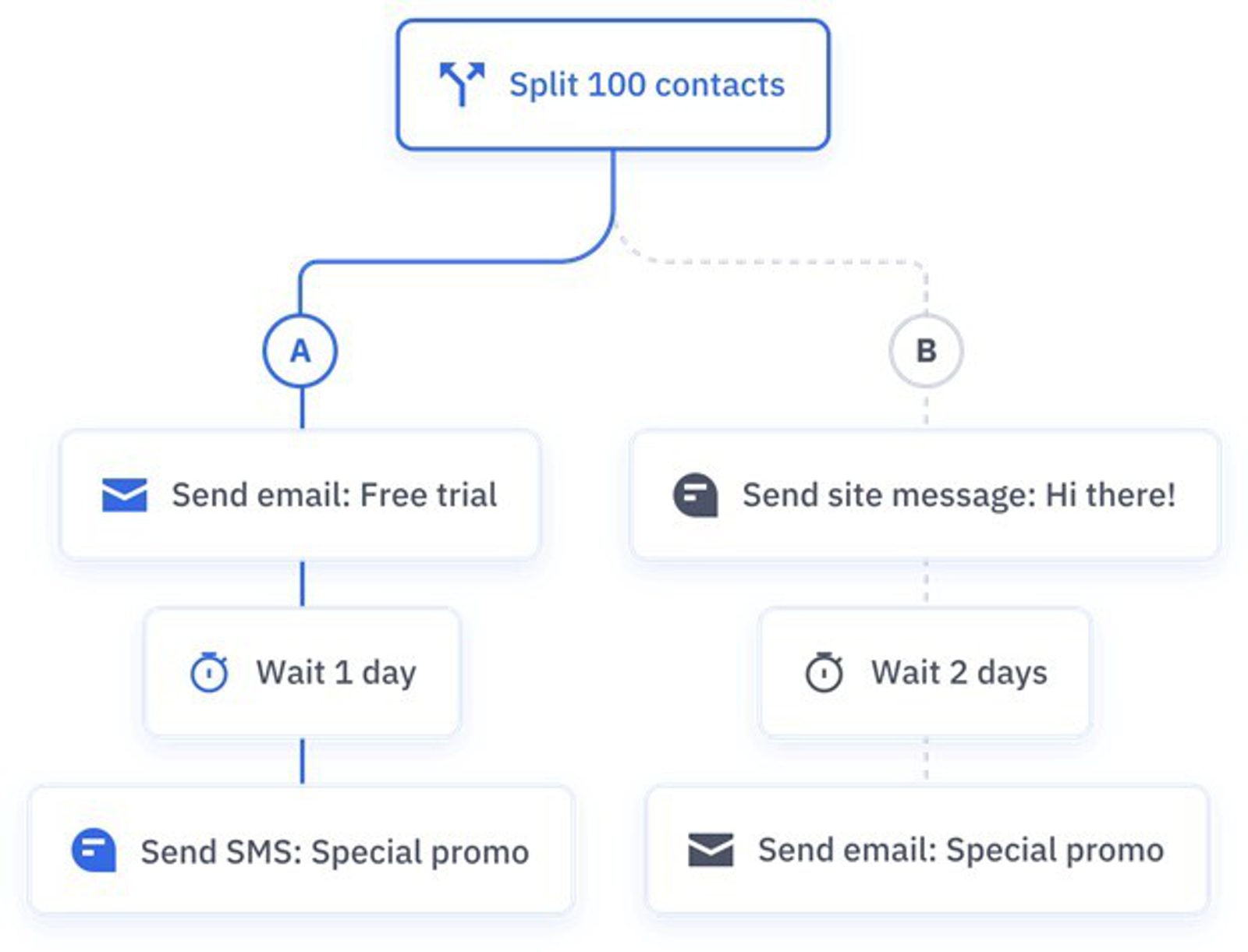
Some social platforms can also create new lists on your behalf, giving you an entirely new audience to target outside of your CRM ads.
Facebook’s ‘Lookalike Audience’ functionality is a prime example.
Facebook identifies new users who might be interested in your ads based on the demographics, interests, and behavior of your existing audience. This means you can reach an entirely new audience without having to manually seek them out.
So how exactly should you segment your audience for your CRM advertising?
The best way to segment your audience depends on what you want to achieve.
Figure out your goals and metrics before you do anything else. This will help you identify if and how you should segment your audience.
Step 3. Understand the customer journey
As we’ve already mentioned, you need to target people with the right information at the right time. To be able to do this, you need to understand the customer journey.
The information in your CRM can help you do this. Here’s how:
- Review customer behavior. Take a look at how your customers have behaved in the past. Are there any trends you can spot in the way they engage with your business? Or any feedback from customers about the buying experience? Take this into account, and you’ll be able to start filling out the steps of the customer journey.
- Analyze past ad campaigns. Find the success and failures of past ad campaigns to help piece together the customer journey. This will inform how you advertise going forward, as well as what to avoid.
- Map the journey. To give yourself a clear picture of what the buyer experience looks like, create a customer journey map. This will serve as a visual representation of the customer journey, making it easier for you to see how customers get into the sales pipeline and through the sales funnel. If you have more than one audience, create separate maps to make it as clear as possible.

Once you’ve got a solid understanding of the customer journey, you’ll be in a much better place to start running your ads.
You can use the information you’ve gathered to make sure you’re targeting prospective consumers on the right channels, with the right messaging, and at the right time.
Take your CRM marketing to the next level
There’s a reason why 79% of businesses use a CRM solution to track their sales.
Leveraging the data in your CRM platform will help you create successful advertising campaigns. Whether that’s on social media, email, or search rankings, utilizing customer data will help you increase customer satisfaction.
Take a look at ActiveCampaign to see how you can start automating the customer experience today.

